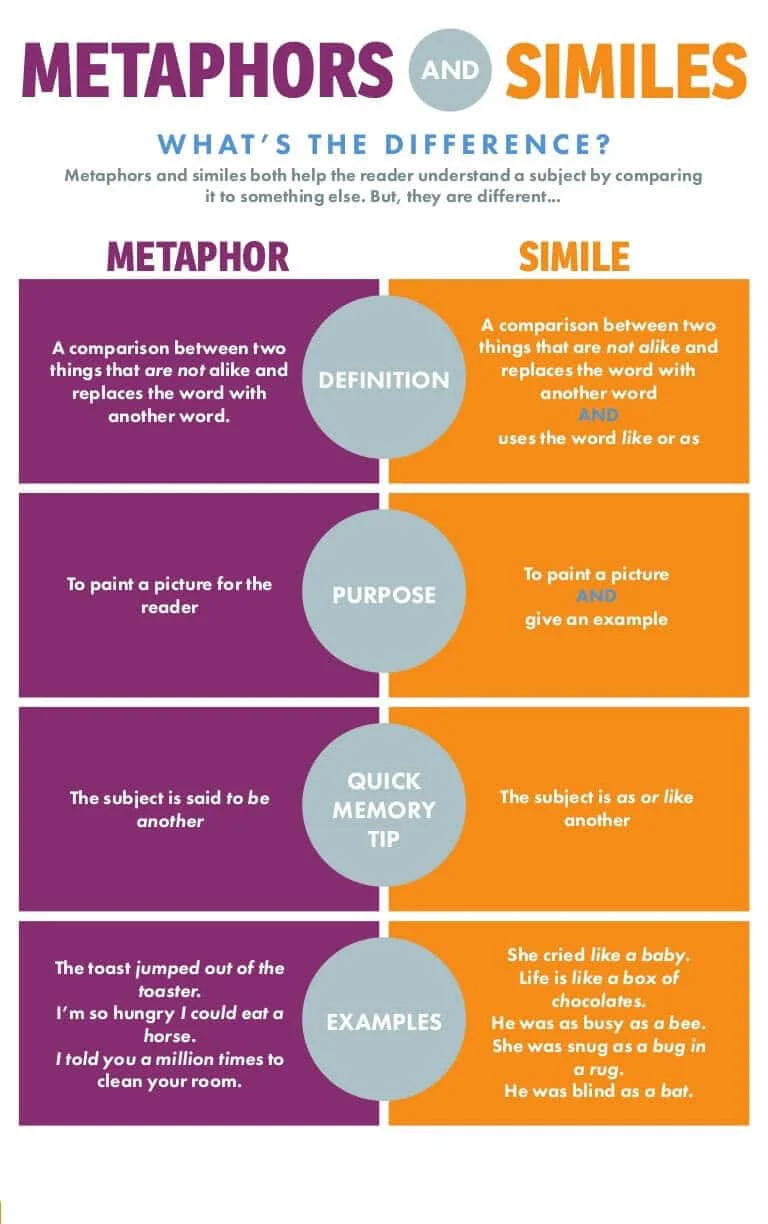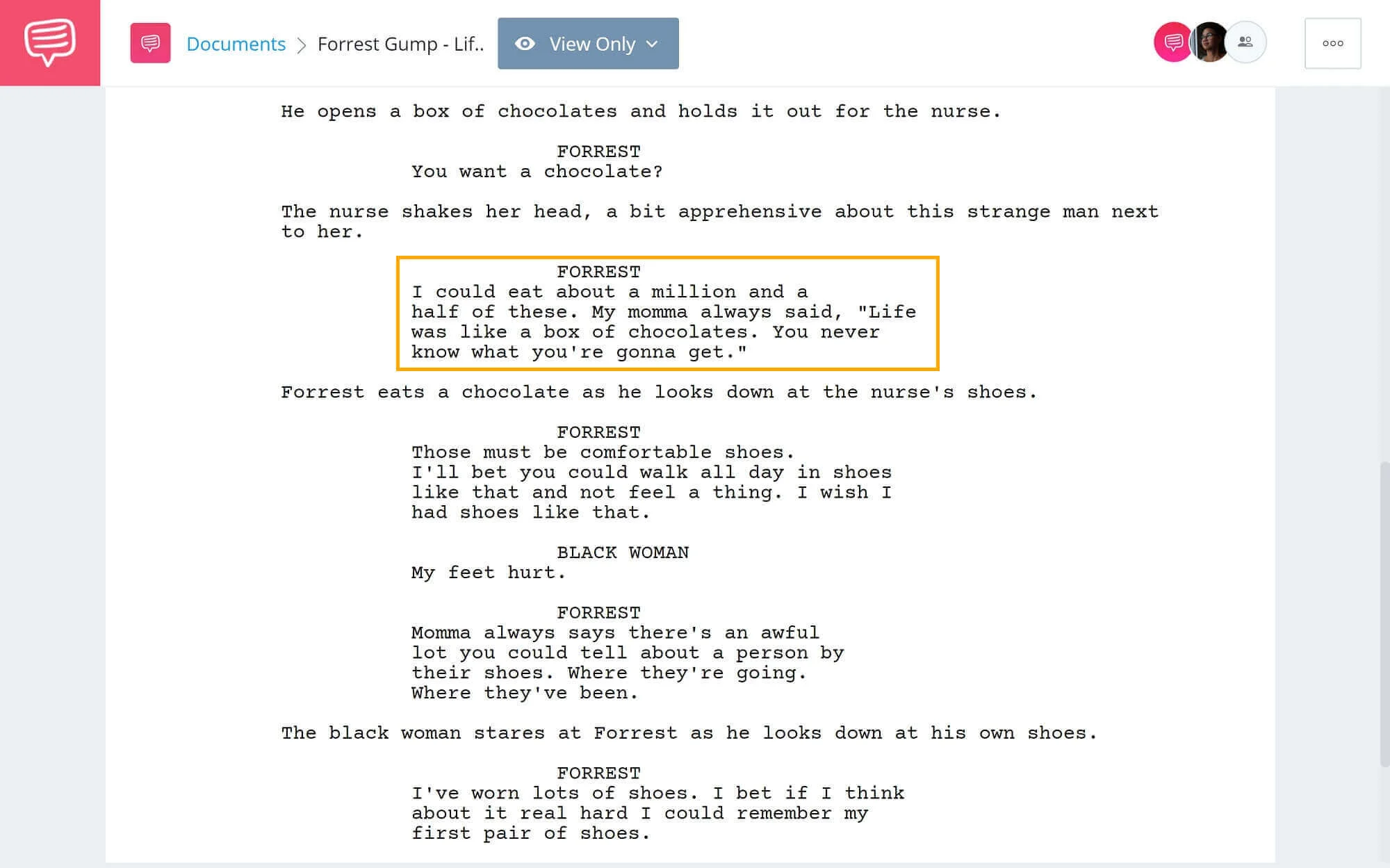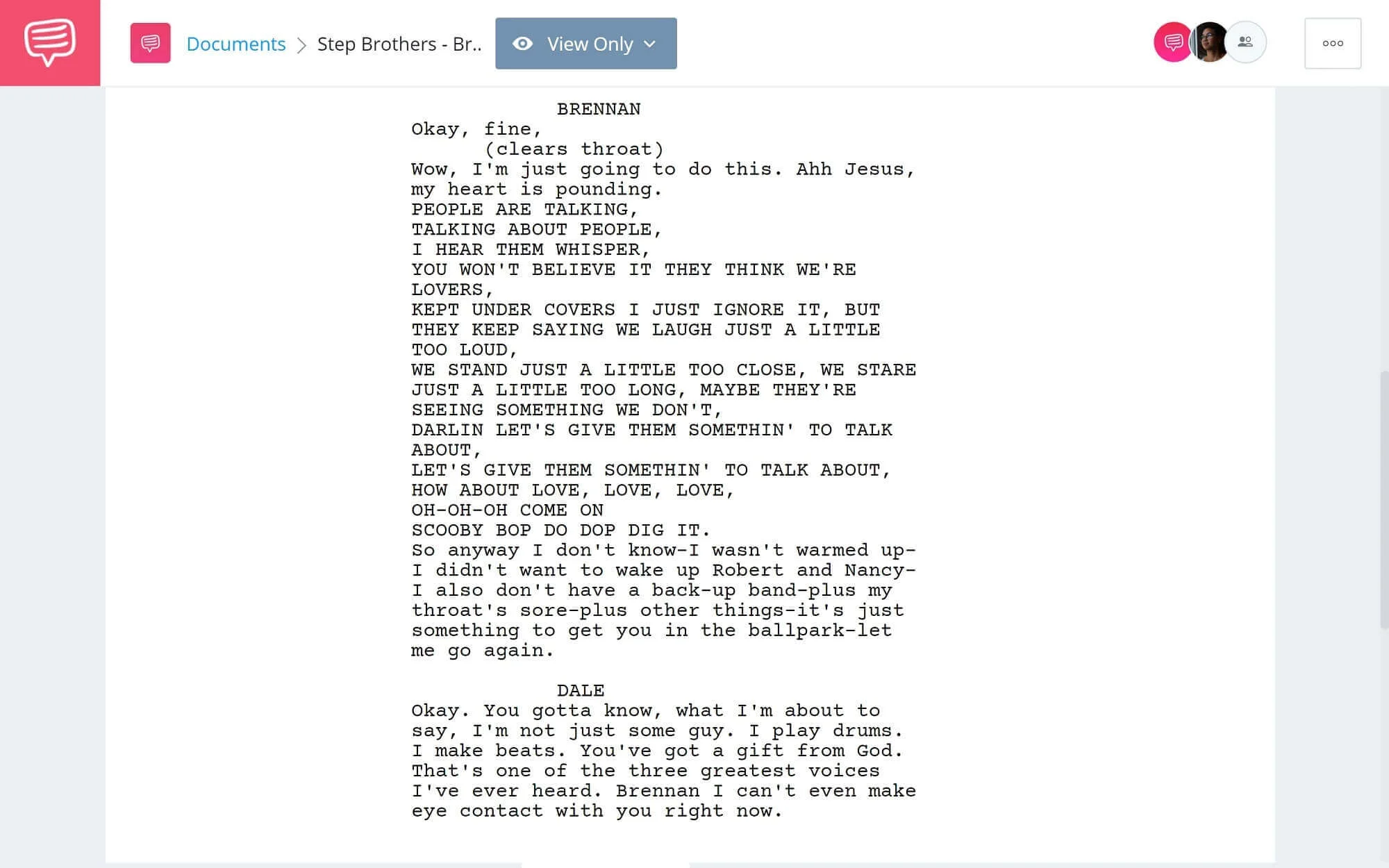In storytelling, it can be extremely valuable to be able to compare a new idea to something the audience already knows. One of the best tools to do this is the simile. So, what is a simile used for? They can make dialogue, characters, or themes of a story more relatable. From outrageous comedies like Step Brothers to heartfelt dramas like Forrest Gump, similes are a great writing tool. Understanding the difference between simile vs. metaphor, and how a simile are used is essential for any well-rounded writer. Before we dive into any simile examples in film, you may be wondering what does simile mean?
Simile Meaning
First, let’s define simile
What is a simile? They can be found throughout literature from poetry to novels. While it’s function is very useful in other forms of literature, it can oftentimes be an overlooked tool in a screenplay. First let’s define simile and look at some simile examples in literature.
SIMILE DEFINITION
What is a simile?
A simile is a figure of speech that makes a comparison, showing similarities between two different things using the words “like” or “as.” The word comes from the Latin “similis” meaning “similar, like.” They are often used in literature such as poetry or novels, but it is also a device used in film by screenwriters.
How to Pronounce Simile
[SIM•uh•lee], rhymes with Italy
SIMILE EXAMPLES IN LITERATURE
- "He looks like right after the maul hits the steer and it no longer alive and don’t yet know that it is dead.” — As I Lay Dying, by William Faulkner
- “O my Luve is like a red, red rose That's newly sprung in June; O my Luve is like the melody That's sweetly played in tune.” — A Red, Red Rose by Robert Burns
- "The cafe was like a battleship stripped for action" — The Sun Also Rises by Ernest Hemingway
Simile Examples in Film
Simile vs metaphor
One common question when it comes to this literary device is “What’s the difference between simile and metaphor?” Literary devices can often be very similar, yet differ in one specific and important way.
Simile and metaphor both compare similarities between two unlike things. A simile, however, uses the words “like” or “as” to compare two things. A metaphor directly states the comparison by stating the way something simply is.
Although the synonyms of a metaphor are nearly identical to simile synonyms, the difference between the two are clear. To better understand these differences, this infographic compares simile and metaphor, side-by-side.

What is a Simile • Metaphor vs Simile
Novelists and poets alike have used similes to creatively establish how a character may feel or how the world of a story may look, but what is an example of a simile in film? How do screenwriters utilize it when a film already has the ability to use visuals to tell the story?
While it is always good advice for becoming a screenwriter to “show, don’t tell” their story, these comparisons can often be a very concise and effective way to communicate information to the audience. Let’s dive into some simile examples in film and see how they are utilized to support critical aspects of a story such as theme and character.
Character Development
Use simile to understand character
One of the most important aspects in all of storytelling is character. Character’s are vital in connecting to the audience. Creating a successful character begins with developing traits and characteristics that an audience resonates with. The lack of depth of a character can often be the deciding factor to a bad movie. It is important to understand how to create characters that engage the audience.
Here is an episode from our TV Writing and Development Masterclass dedicated to character development and writing character arcs.
How to Create A TV Character and Develop Their Arc • Watch the Entire Masterclass
Once you’ve developed your character and pinpointed who they are, you must creatively communicate that to the audience. Oftentimes, filmmakers use a simile to establish the traits of a character or hint at subtext, which can be difficult to summarize or communicate efficiently.
What’s a simile example that demonstrates this? One can be found in the Shrek screenplay. We pulled the Shrek screenplay into StudioBinder’s screenwriting software to analyze how screenwriters William Steig and Ted Elliott use a simile to communicate the complexities of Shrek by comparing him to an onion.
Donkey compares Shrek to an Onion • Read Full Scene
In this dialogue, Shrek is trying to tell Donkey that ogres are more complex than people think. To summarize this characteristic concisely, a simile is used to compare the layers of an onion to the intricacies of an ogre like Shrek.
Themes in Film
Use simile to communicate themes
Themes in film can often be difficult to communicate to an audience in a short period of time. Although themes are vital to good storytelling, they can be robust, complex, or long-winded so screenwriters utilize comparisons to summarize these complex themes more simply for the audience to understand right away. Sometimes, writing better dialogue means writing smarter dialogue.
Take a look at this example from Forrest Gump. Within the first two pages of the screenplay, screenwriter Eric Roth introduces one of the core themes of the film. In this scene, Forrest offers a woman next to him some chocolate along with one of his mother’s best pieces of advice.
Life was like a box of chocolate • Read Full Scene
Roth uses a simile to compare a box of chocolates to life and how both can be unpredictable. This theme appropriately opens up the film as it follows the unpredictable events of Forrest’s life. The simile comes around full circle at the end of the movie in a tear-jerking scene.
Forrest Gump • Life is a Box of Chocolates
Because the simile is concise, eloquent, and packed full of meaning, Roth is able to interject it as a motif within the dialogue. Similes aren’t only used to pack an emotional punch. They are often to nail an iconic one-liner or punch line in our list of best comedies.
Examples in Film
Use simile for exaggeration
Similes can be used to hyperbolize or exaggerate a point a character wants to make. This is often used in comedy to both emphasize a point and make a joke. Consider this moment from Step Brothers.
Here, Brennan is singing for the first time in front of Dale. After singing, Brennan is insecure and does not know if Dale genuinely liked his singing or not. Dale continues to reassure him that his singing is amazing. Watch the scene and see if you can spot the comparison.
Step Brothers Singing Scene
Now, let’s take a look at the screenplay, which did not utilize this comparison. John C. Reilly improvised the line “Your voice is like a combination of Fergie and Jesus.”
Brennan Sings • Read Full Scene
Can you see the difference between the screenplay and the final scene? John C. Reilly’s simile made the scene more hilarious and emphasized his admiration for Brennan’s voice more effectively and with fewer words. This a great simile example that results in a scene that is more hilarious and more realistic dialogue.
UP NEXT
How storytellers use metaphor
Now that we’ve explored the simile definition and examples, let’s dive even deeper into screenwriting with our next article. We touched upon the differences between simile and metaphor but there's more we need to explain. With a solid grasp of metaphor, your layered and nuanced writing will take that next step.



